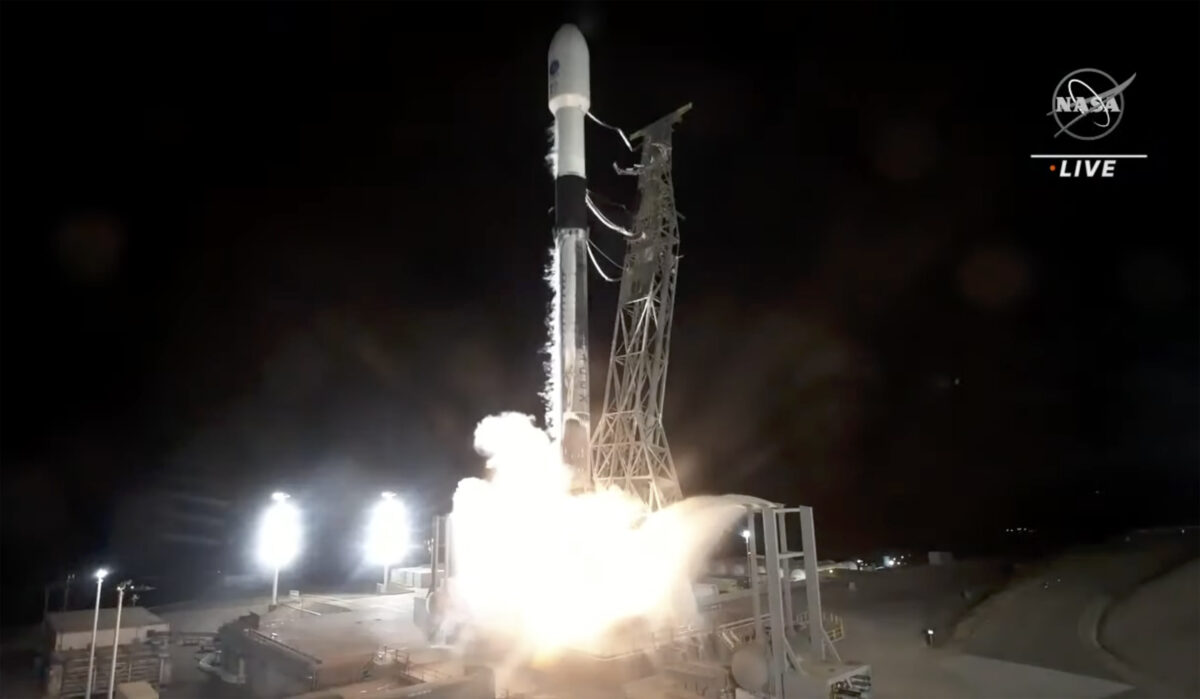


The U.S. Space Development Agency (SDA) successfully launched the first of what will become a planetary constellation comprising hundreds of satellites as America’s first line of defense against enemy missiles.
The launches came as the United States steps up its actions to counter threats posed by China and Russia.
A SpaceX Falcon 9 rocket took off from Vandenberg Space Force Base in California on April 2 and deployed the first 10 satellites in low-earth orbit.
“It was a beautiful Palm Sunday launch,” SDA Director Derek Tournear told attendees at a space defense forum three days after the event.
“This is our first launch of what we call the Proliferated Warfighter Space Architecture (PWSA).”
SDA is the agency within the Space Force that procures and deploys space defense technology in partnership with private industry.
Proliferation is the key to making the system immediately useful in tracking missiles anywhere in the world according to Tournear, and to making it invulnerable to attack.
By deploying hundreds of small, relatively expensive, devices rather than a few large satellites costing billions of dollars each, the network will be more versatile and easier to keep current.
The satellites will be launched in three groups and be initially operational within two years, Tournear said.
The 10 initial satellites were part of Tranche Zero, which will demonstrate the military’s ability to tie missile-tracking satellites together through intermediary satellites, which are called transport satellites.
A second Tranche Zero launch will deliver the remaining 18 satellites in that group.
Once linked, the network will allow the SDA to communicate information on incoming missiles to the Space Force units responsible for eliminating them.
Tournear hopes to complete that linkage next month “so we can demonstrate that we completely closed that kill chain.”
Tranche 1, comprising about 150 satellites, will begin launching in September and continue at the pace of approximately one launch each month. These satellites will build out the network of warning, tracking, and transport satellites.
When fully deployed, Tranche 1 “will allow us to be able to bring the capability directly to the warfighter to support a fight in 2025,” Tournear said.
Tranch 2 will include more than 200 satellites. It will improve the PWSA’s ability to provide “persistent” global coverage.
Multiple satellites are needed to provide continuous coverage for a particular geographic area because the satellites must occasionally be turned off to recharge the batteries.
“Tranch 2 will have enough satellites up there to … [allow] cycling amongst the satellites, but then still have global persistence anywhere we want,” Tournear said.
Together, the satellites will form seven “layers,” each with its own function such as tracking and transport.
The 10 satellites in Tranche Zero were deployed within 30 months from assigning the contracts to launching the space vehicle, which is an extremely rapid timeframe according to Tournear.
This is in keeping with the SDA motto, “Semper Citius,” meaning “always faster,” and with a shift by the Department of Defense toward shorter lifespans for space equipment.
In the past, defense systems often took 10 years to develop and would be in use for 15 years. The new strategy is to develop systems quickly for a five-year deployment, according to Tournear.
This will reduce cost in the long run, he said, by creating a perpetual development cycle similar to that for cell phones.
Transport satellites are expected to cost the taxpayer about $15 million but should not increase in price even as newer models gain upgraded capability due to efficiency gained by the manufacturers, Tournear believes.
He noted that the price of new cell phones has remained stable even as new features were added.
The deployment of Tranche Zero comes shortly after aggressive moves in space by potential adversaries China and Russia.
Russia conducted a major missile test in 2021 and “is deploying asymmetric counter-space systems meant to neutralize American satellites,” according to Gen. Chance Saltzman, chief of space operations for the U.S. Space Force, who also addressed the space defense forum.
In Ukraine, Russia has jammed U.S. communications satellites and GPS systems. Though it has not physically attacked U.S. satellites themselves, both Russia and China have the ability to do so.
“Both have a range of operational counter-space capabilities, including terrestrial lasers to disrupt and degrade satellite sensors, electronic warfare jammers, targeting GPS and satellite communications, as well as anti-satellite missiles,” Saltzman said.
“Both are working to use space for their own military purposes.”
A particular concern is that anti-satellite missiles are now maneuverable, making them more difficult to intercept.
“Even more scary to me is the July 2021 launch of their first fractional orbital launch vehicle, which starts out as an ICBM, and then maneuvered an end game as a hyper-glide vehicle,” Air Force Lt. Gen. DeAnna Burt, deputy chief of space operations for cyber and nuclear, told the space defense forum audience.
“What that means to me, and what should matter to all of you, is that it can now maneuver around certain detection capabilities.”
The PWSA is designed to counter such threats.
Despite the potential of an anti-satellite attack and the possibility of a collision with one of the 48,000 objects in low earth orbit, PWSA should be relatively safe, Tournear believes.
“I’m not worried about physical threats to the satellites themselves,” Tournear said. “The way we get around that is by proliferation.
“We’ll have hundreds and hundreds of these satellites up there. It will cost more to shoot down a single satellite than it cost to build and launch that satellite,” he said.
“We just completely changed the equation.”
The next launch of PWSA satellites is slated for June.


